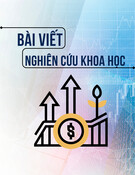
http://www.iaeme.com/IJM/index.asp 37 editor@iaeme.com
International Journal of Management (IJM)
Volume 9, Issue 1, Jan–Feb 2018, pp. 37–41, Article ID: IJM_09_01_007
Available online at
http://www.iaeme.com/ijm/issues.asp?JType=IJM&VType=9&IType=1
Journal Impact Factor (2016): 8.1920 (Calculated by GISI) www.jifactor.com
ISSN Print: 0976-6502 and ISSN Online: 0976-6510
© IAEME Publication
HOW COMPANIES MAINTAIN THEIR
WORKFORCE TO GAIN A SUSTAINABLE
COMPETITIVE ADVANTAGE
Debanjana Deb Biswas
PGDM – HRM (Persuing), (AICTE Approved, NBA and AIU Accredited),
Globsyn Business School, Kolkata, West Bengal
ABSTRACT
The world is moving at a fast pace. We have shifted drastically from an economy
based on manufacturing to one which is predominantly being ruled by services.
Organizations are now being run by knowledge and meritocracy rather than
depending upon only capital or unskilled labour. Competition is increasing at a
gigantic form at the global market and in order to sustain in that, organizations must
go for an effective and efficient deployment of human resource capital in order to
achieve a competitive edge over the other companies (Schuler, Dowling & De Cieri,
1993). A lot of the researches made on the role of human resources in an organization
have basically focused on management (Adler & Bartholomew, 1992a; Adler &
Bartholomew, 1992b; Bass & Burger, 1979; Doz & Prahalad, 1988; Ratiu, 1983). It
all depends how effectively the management of a particular company employs the
managerial techniques across various cultures in order to shoot out the difficulties
faced by the employees in adjusting both in the work environment as well as social set
up.
This article aims to find out how human resources should be maintained by the
organizations so that, they can play a potential role in the sustainable competitive
advantage of the firms in the global scenario.
Key words: Global Competition, Effective Workforce Management, Meritocracy,
Sustainable Competitive Advantage].
Cite this Article: Debanjana Deb Biswas, How Companies Maintain their Workforce
to Gain a Sustainable Competitive Advantage. International Journal of Management,
9 (1), 2018, pp. 37–41.
http://www.iaeme.com/IJM/issues.asp?JType=IJM&VType=9&IType=1
1. INTRODUCTION
Success of any organization depends a lot upon the employee commitment towards that
particular firm. The behaviour of the employees, their perceptions, and dedication are sources
to sustain the competitive advantage of a firm in the global scenario. Skilled employees are an
asset to the organization. Hence, they are a scarce, non-substitutable and inimitable resource.

Debanjana Deb Biswas
http://www.iaeme.com/IJM/index.asp 38 editor@iaeme.com
In this fast moving world, when consumers always have so many options available to
themselves, it becomes extremely important for them to create a competitive advantage for
themselves which will make them different from their competitors. The customers must find a
valid answer to their question why should they purchase from you and why not from
somebody else having the same type of products and services. Competitive advantage, thus,
lies at the core of an organization’s performance. However, creating a superior competitive
advantage, depends a lot upon the efficiency with which the resources of a firm is being used,
along with the business strategies being implemented. Thus, today a viable business strategy
is defined as one which has the capacity to identify unique resources available in the
organization and utilize them in a unique way.
Keeping aside the 4Ps of marketing (Product, Price, Place and Promotion), companies
must identify one more major aspect to differentiate themselves from their competitors. This
major aspect of any business is its HR Strategies and Human Capital. The effective and
efficient management of the scarce human resource available can create a different image for
the company altogether in the marketplace. Conversely, if a company fails to do so, the
organization will earn a bad name for itself. Often organizations make the mistake of thinking
that human resource management is needed when the firm grows. But, it is to be remembered
that proper HR Strategies should start right from the day when the firm starts existing.
. IMPLICATION OF PROPER HR STRATEGIES TO GAIN A
COMPETITIVE ADVANTAGE
According to Michael Porter, Competitive Advantage for any firm links between the internal
resources of the firm, its strategies and its performances. But today, we depend a lot on the
Resource- based view which suggests that human resource systems can contribute to
sustained competitive advantage through facilitating the development of competencies that
are firm-specific. Today, most organizations follow Strategic Human Resource Management
(SHRM) which is far different from the traditional HR methods used earlier. SHRM is
basically concerned about the roles played by the systems being followed in the HR practices
in tune with the company’s performance. It mentions specifically that human resources can
provide a better competitive edge to the firm’s performance. Organizations have finally
started realising that having successful HR policies is a must for their success in various
fields, like productivity, quality and so on. Very logically, all the assets, apart from human
resources, in an organization, are inert. If proper manpower is there, all the other things can be
easily operated to increase the productivity of a firm. In the 21st century, the key to sustaining
a profitable company or a healthy economy is the productivity of the workforce.
3. LINEAGE AND UTILITY OF STRATEGIC HR IN GAINING A
COMPETITIVE ADVANTAGE
Organizations depend upon the HR department to select and recruit the best possible talent
and also plan for an effective training and development program for them in order to provide
a better competitive advantage over other companies. What is important in this aspect is that
success achieved by the HR department of an organization cannot be imitated by the
competitors easily. This is largely due to the fact that the success that is generated due to the
effective and efficient management of people is usually not as transparent as its source. As we
all know, the idea of SHRM is to promote high performance in workplaces through effective
human capital management. The key goal is to increase employee productivity by identifying
major HR issues where strategies can be implemented in the long run to improve employee
morale and productivity.

How Companies Maintain their Workforce to Gain a Sustainable Competitive Advantage
http://www.iaeme.com/IJM/index.asp 39 editor@iaeme.com
4. LITERATURE REVIEW
Strategic Human Resource Management is “the creation of linkage or integration between the
overall strategic aims of business and the human resource strategy and implementation. In
principle, the processes and people within the company are managed in such a way as to
foster the aims of the business strategy and create an integrated approach to managing the
various human resource functions, such as selection, training and reward so that they
complement each other”. Most organizations face a changing market scenario. In order to
sustain is such a situation, companies must keep on adding value to their competitive
advantages in order to set them aside. With each single day passing, organizations are
identifying their human resources as a source of their sustained competitive advantage.
Guest et al. designed a model based upon the relationship between HRM and
performance. The logic behind HR’s effectiveness highlights that human resources put a
firm’s performance to a next level through its contribution to effective and efficient strategy
execution. HR professionals (along with the line managers) need to identify that effective
strategy execution is the basis of adding to the shareholder’s value and that it is a system of
intermediate outcomes. Thus, if an appropriate set of HR policies are developed and
implemented properly, then the performance of the firm will definitely be much better.
5. HOW COMPANIES ARE IMPLEMENTING STRATEGIC HR TO
SUSTAIN TO GAIN A COMPETITIVE ADVANTAGE
For any organization, HRM needs to achieve the following strategic objectives in order to
gain a sustainable competitive advantage –
To achieve the employees’ commitment towards the organization’s vision and mission.
To clearly define the behaviours required for the success of the organization and have proper
policies to encourage, reward and value such attitudes.
To encourage employees to participate wholeheartedly in the roles they play in the
organization.
To invest behind the employees through the introduction and encouragement of modern
learning processes, designed particularly to increase their skills and capabilities to meet the
organization’s needs.
To make it a point to identify the knowledge required in order to serve consumers better and
ensure that such talents are incorporated in the organization from time to time.
Today, for all the organizations, SHRM is no more a mere function of the human resources
(HR) department anymore. All managers and executives need to be involved because the role
of people is becoming increasingly vital to a company’s competitive advantage. Researches
have shown that almost all successful organizations have the following things in common –
Providing of employment security.
Engaging in the process of selective hiring.
Using self-managed teams.
Practicing decentralization.
Paying well.
Training and developing employees according to the latest requirements.
Reducing status differences.
Sharing of information.
Almost all successful organization, today, consider HR as a strategic asset and measure
HR performance in terms of its strategic impact. When each piece is in the proper place, then

Debanjana Deb Biswas
http://www.iaeme.com/IJM/index.asp 40 editor@iaeme.com
it creates something that we call a High Performance Work System (HPWS), which is a set of
management principles put into practices that attempt to create an environment within an
organization in which the employee has greater involvement and responsibility. Often
companies recruit these days on the basis of changing global scenarios to sustain the
completion.
A very good example of the same can be that of Robert Half International (RHI), a
professional consulting firm, which has staffing operations in more than 400 locations
worldwide. During the recession of 2009, RHI began hiring older, more experienced workers
to add to its roster of temporary workers. Typically, temporary workers are supposed to be
low-level employees, but during the recession, many workers with fifteen or twenty years of
experience lost their jobs or retired from full-time jobs. RHI hired older highly skilled
workers, such as accounting and finance experts, to work on temporary project, thereby, going
for a company restructuring and emerging from bankruptcy. The situation was a win-win one
as the firm got access to experts they may not otherwise be able to afford, while retired
workers earned extra money after a layoff. Zurich-based Adecco, a competitor to RHI,
likewise hired older workers.
Thus, selecting the correct HR policies can actually pay off in the international market as
well. Most successful organizations implement SHRM right from the process of Recruitment
itself. Though the fruits are often obtained in the long run, such waits are mostly seen to be
beneficial for the companies.
6. CONCLUSIONS
SHRM has a positive impact upon the productivity of the bottom line. Statistics have shown
that greater the adoption of proper HR practices, greater is the rate of business success. The
ways enacted by an organization to manage its HR has a very important relationship with the
organization’s performance. The competitiveness of the business depends to a large extent on
this lineage. Thus, managers must always aim to design such programmes which will bring
forth better HR policies, which in turn, will influence the process and outcome variables.
REFERENCES
[1] http://www.freepatentsonline.com/article/Journal-Business-Strategies/75372918.html
[2] http://ijahms.com/upcomingissue/08.09.2015.pdf
[3] https://www.cleverism.com/hr-strategy-competitive-advantage/
[4] Lado, Augustine A., Wilson, Mary C., (1994). “Human Resource Systems And Sustained
Competitive Advantage: A Competency-Based Perspective”, Academy of Management
Review, Vol. 19. No. 4, p.699, pp.699-727.
[5] https://pdfs.semanticscholar.org/ef18/5f538ef545d30478821893672e81201ddf78.pdf
[6] Fitz-enz, Jac, (2000). The ROI of Human Capital: Measuring the Economic Value of
Employee Performance, American Management Association, USA, p.1.
[7] http://smallbusiness.chron.com/can-hr-become-competitive-advantage-organization-
50913.html
[8] http://www.emeraldinsight.com/doi/full/10.1108/SHR-03-2014-0023
[9] Gratton, Lynda et al., (1999). Strategic Human Resource Management, Oxford University
Press, New York, p.7.

How Companies Maintain their Workforce to Gain a Sustainable Competitive Advantage
http://www.iaeme.com/IJM/index.asp 41 editor@iaeme.com
[10] The Relationship Between HRM and Performance Source: Michael Armstrong (2006).
Strategic Human Resource Management: A Guide to Action. Kogan Page. London. p. 75.
[11] Jeffrey Pfeffer and John F. Veiga, “Putting People First for Organizational Success,”
Academy of Management Executive 13, no. 2 (1999): 37–48
[12] Robert Half International accessed January 28, 2011, http://www.rhi.com/AboutUs.
[13] Temp Giant Robert Half Welcomes Boomers,” BusinessWeek, May 21, 2009, accessed
January 28, 2011,
http://www.businessweek.com/magazine/content/09_22/b4133054601320.htm.
[14] https://saylordotorg.github.io/text_international-business/s16-01-the-changing-role-of-
strategic.html




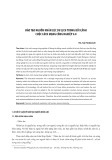
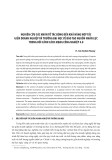





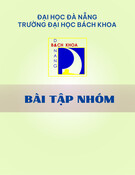
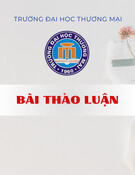
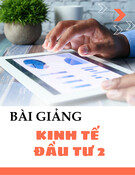
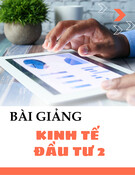
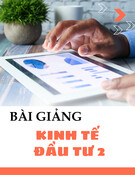
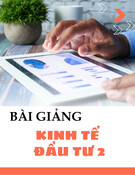
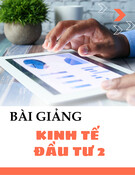
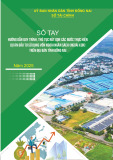
![20 câu hỏi Quản lý dự án phần mềm có đáp án [mới nhất]](https://cdn.tailieu.vn/images/document/thumbnail/2025/20251003/hieu2004haha@gmail.com/135x160/78791759734259.jpg)
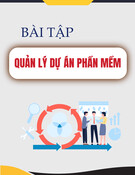

![Tài liệu Quản lý dự án: Kiến thức nền tảng toàn diện [chuẩn SEO]](https://cdn.tailieu.vn/images/document/thumbnail/2025/20250910/kimphuong1001/135x160/92631757496585.jpg)


